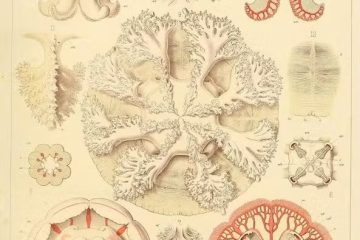Social Fascia Keeps the Score

Fascia is “the band of thin, fibrous connective tissue that wraps around and supports every structure in your body” (Cleveland Clinic). My favorite kind of massage is myofascial massage. Releasing tension in the fascia can open up amazing mobility in my body. I recover long forgotten agility.
As a theologian exploring trauma healing, I have been investigating the ways our social or collective bodies also have something like fascia. Our social “connective tissue” takes the form of communal attitudes, values, behaviors, norms, policies or laws, and ideologies. I have wondered: What happens when our social fascia is tense, tight, or armored from past wounds? Looking at what we know about individual trauma healing gives clues about healing for the social body, opening the possibility of new mobility for deeply polarized and rigid social bodies, be they communal, cultural, familial, or national.
“The body keeps the score” (Bessel van der Kolk). This idea, also the title of a foundational book in trauma healing, has become more and more mainstream. Our bodies hold the legacy of the wounds of our past. The arm in a sling is an obvious indicator of a body in a healing process, but there are myriad more nuanced ways that wounds nest in the body. For example, a busily tapping foot can be a bodily way of remembering the need to escape abuse, or a tight jaw can be the physical marker of chronic silencing by an oppressive social system. These physical indicators may have sources other than trauma but they also serve as examples of the ways the body keeps the score of traumas endured. Many of the ways the body remembers trauma are far more subtle, taking the form of habits and personality patterns. A person can have a tendency to “lean in” anxiously and over-involve herself in things, following a trauma pattern of needing to caretake others in childhood. Another can chronically avoid depth of connection after being hurt in relationships.
Sometimes these bodily manifestations of old wounds are judged as problems though they may be the tools a body is leaning on in the healing process. Without those physical “slings,” the emotional fears and needs might be totally overwhelming, like a fractured arm with no support. The “scorecards of trauma” can play a supportive role in survival and recovery. They can help people adapt and heal. One hopes they are temporary and can eventually be removed, like the sling, released with compassionate understanding rather than shame. (See Staci Haines’ discussion of “safety shaping” in chapter 4 of The Politics of Trauma.)
Yet there are also more caustic ways our individual bodies cope with wounds—ways that are destructive of our own bodies, of other people, of other creatures’ bodies, and of the body of the earth. Addictive patterns and violence against others are examples (explored by Gabor Mate). These trauma responses may be part of a body’s distorted attempt to deal with its “dirty pain” but they are hazardous in ways that generate yet more pain (see Resmaa Menakem’s distinction between clean and dirty pain in My Grandmother’s Hands).
Like individual bodies that carry the record of trauma survival, the social body also keeps the score. A religious congregation, having survived a former leader’s abuse, armors itself against future harm and chronically rejects new leadership. A hospital administration that once witnessed the tragedy of infant abduction implements punitive, restrictive policies for birthing families. A family system wounded by deep grief develops protective patterns of disconnection and falls out of touch. It is as though the adaptive “slings” for the metaphorical fractured arm could not come off, and now atrophy of the group’s musculature inhibits flexibility and growth.
This happens on the individual and group level. Menakem teaches that unhealed trauma in an individual can look like personality, while in a group over time it can look like culture (see his discussion of traumatic retention in chapter one of My Grandmother’s Hands).
As with the individual’s most destructive patterns, there are also more dangerous ways our social bodies hold our wounds. Some are overtly destructive of human life. The Center for Justice and Peacemaking teaches that communities with unhealed trauma can “act out” and “act in” (view their “Breaking the Cycles of Violence” diagram). “Acting in” could look like the internalized impacts of racist violence explored by Joy DeGruy in her discussion of post traumatic slave syndrome. “Acting out” could look like one marginalized group marginalizing another, as C. Winter Han explores in the dynamics of racism in gay communities (Han, Racial Erotics). Or a social body acting out of old wounds can look like a people escaping genocide unleashing its own genocidal assault.
The social fascia, the connective tissue of the collective body, keeps the score. Without healing, collective trauma wounds our social musculature into embodied necropower rather than ecosystems of life.
Healing these scarred social bodies will require collective body work. And like the excellent massage or regained strength after physical therapy, marvelous healing is possible for the social body with the delights of relief and new mobility.
On my local level, I have tried to become a social body worker. Charged with leading Diversity, Equity, and Inclusion initiatives on my campus, I at first encountered an eager and willing social body at my school. But in the effort to protect against the chronic pains of sexism, classism, heterosexism, racism, Christian hegemony, and more, our social fascia tightened. Transformation efforts stalled. This social “protective armor” makes sense; the wounded social body too wants to feel safe. I have learned that if we are going to transform organizational bodies with Diversity, Equity, and Inclusion, we must first heal social facia. Otherwise the social body stays stiff and on guard against change.
Given the vast destructiveness of human and planetary life from social bodies in pain, healing strategies are urgently needed. Our planet and its people need the kinesthetic experience of post traumatic growth so that the social body can once again become an agile ecosystem of creativity and insight. We need social body workers from all fields. Training in various methods for engaging social or collective trauma healing is available, including through: Center for Mind Body Medicine, Strategies for Trauma Awareness and Resilience, Prentis Hemphill’s The Embodiment Institute, Resmaa Menakem’s Black Octopus Project, Dr. Joy DeGruy, Embodying Racial Justice, Have Heart Somatics, Ream Somatics, Pocket Project, Strozzi Institute, and through one on one consultation with a Generative Somatics practitioner.
#
Anna Mercedes is Professor of Theology at the College of Saint Benedict and Saint John’s University, and adjunct faculty at United Theological Seminary of the Twin Cities. Anna is also an ordained pastor in the Evangelical Lutheran Church in America, a member of the Christ Seminar with Westar Institute, and the author of Power For: Feminism and Christ’s Self-Giving and Interrupting a Gendered, Violent Church. Anna has completed STAR Level II with the Center for Justice and Peacebuilding and the Advanced Training Program with the Center for Mind Body Medicine, and develops resources for groups and organizations at https://supplecommunity.org/.
Counterpoint blogs may be reprinted with the following acknowledgement: “This article was published by Counterpoint Navigating Knowledge on 28 February 2024.”
The views and opinions expressed on this website, in its publications, and in comments made in response to the site and publications are those of the author(s) and do not necessarily reflect the views and opinions of Counterpoint: Navigating Knowledge, its founders, its staff, or any agent or institution affiliated with it, nor those of the institution(s) with which the author is affiliated. Counterpoint exists to promote vigorous debate within and across knowledge systems and therefore publishes a wide variety of views and opinions in the interests of open conversation and dialogue.
Image credits: Alex Shuper on Unsplash




1 Comment
The Bodywork of Social Transformation - Counterpoint: Navigating Knowledge · July 3, 2024 at 1:58 PM
[…] before I heard of Lugones’s term, I had been diving into theories of trauma. Through trauma studies, I began to see how individuals carry around the “shapes” of their trauma conditioning. Not […]